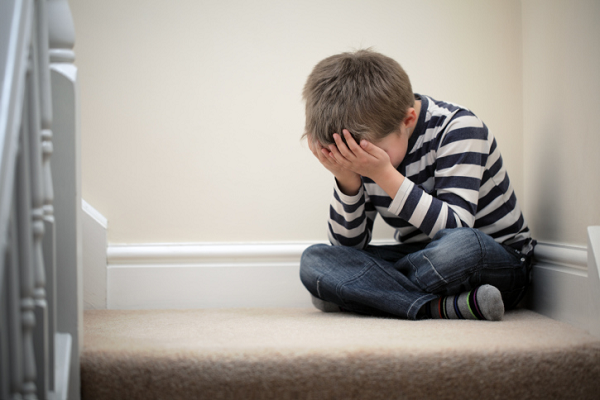The Mirror's Health , Lifestyle and Fashion

Child, adolescent mental health: Role of parents
Multiple factors predispose young persons to varying degrees of mental illnesses such as depression, anxiety and psychosis. These conditions mostly manifest as emotional outbursts, truancy, social isolation and a decline in school performance.
Advertisement
However, given the needed attention and care, mental health disorders among children and adolescents can largely be prevented. It is, therefore, imperative to create the needed awareness as a means of promoting and preventing childhood and adolescent mental disorders.
The Dora Awuah Foundation has earmarked the month of May as Children and Adolescent Mental Health Month. The goal is to raise awareness of key issues affecting the mental well-being of those young ones, sharpen the responsiveness of parents in preventing these challenges and assist in seeking help for young persons who may critically require professional help for these challenges.
The Dora Awuah Foundation is a Non-Governmental Organisation (NGO) which promotes mental health through awareness creation of mental health issues, crisis intervention and empowerment, focusing on the youth.
Overview
About half of all mental health conditions have their onset at a mean age of 14 (WHO, 2020). To put this into perspective, depression is the single largest contributor to the global burden of disease for people aged 15–19, and suicide is one of the three leading causes of mortality among people aged 15–35.
The high incidence of mental health challenges in the younger population is found to be mainly due to the fact that adolescence as a stage of development is fraught with experimentations of several risky behaviours (McKenzie et al., 2011).
The period of adolescence is a crucial stage of development where biological and psychological functions are at peak performance for academic and social life. Moreover, it marks the transition from childhood into adulthood.
The implication is that unresolved emotional and psychological difficulties are transferred to adult life, adding up to the inherent stressors of adulthood. Conversely, successful navigation of childhood and adolescence results in self-confidence, appropriate networking skills, academic competence and resilience. Supportive environments at home, school and in the bigger community promote and prevent mental health problems among these cohorts.
The case of Ghana
According to the 2010 Population and Housing Census, 57 per cent of Ghana’s population are under 25 years. Research also indicates that about seven per cent of Ghanaian school pupils experience mental health disorders which significantly impair their academic work (Kusi-Mensah et al., 2019).
The most prevalent mental disorders are depression and anxiety disorders.
Recent evidence indicates that bullying, homosexuality and sexual orientation crises, internet addiction problems, and suicidal behaviours and self-harm are some predictors of mental health among the youth.
Unfortunately, the country has no clear-cut policies for the prevention and treatment of childhood and adolescent mental health issues (Formentos et al., 2021).
Determinants of CAMH
Multiple factors determine Child And Adolescent Mental Health (CAMH) outcomes. Individuals exposed to multiple risk factors experience a greater tendency of suffering from mental health conditions.
These vulnerabilities include poverty, insensitivity to emotional and physical needs, harsh parenting, constant quarrelling and discord at home, and divorce.
Stressful school environments, partly due to bullying, sexual abuse, persistent feelings of low self-esteem, stigma and discrimination are some other key determinants.
Emerging risk factors include maladaptive behaviours, perfectionism, undue competitiveness, teenage pregnancy, child marriage, abuse of alcohol and other substances.
Common symptoms
Children and adolescents show mental health problems in a variety of ways. While some may internalise their distress, most commonly reported symptoms include frequent fears or worrying, complaints of stomach aches or headaches with no known medical cause, hyperactivity and poor concentration, difficulty sleeping or sleeping too much, disinterest in pleasurable activities, withdrawal from friends and loved ones, and suicidal thoughts and attempts.
The role of parents
The majority of mental health problems encountered by children and adolescents are associated with parental characteristics and gaps in nurturing.
Poverty, questionable parental mental health status, harsh and unconcerned parenting styles strongly influence the mental health outcomes of children and adolescents (Kirby, Wright & Allgar, 2020).
Parental sensitivity to the emotional and physical needs of young people serves as a buffer against emotional stress.
To put this into perspective, for parents who are less endowed economically, for instance, a warm and caring family environment which utilises appropriate communication skills can safeguard against mental health challenges.
As such, irrespective of the psychosocial and economic challenges families face, one can be intentional in creating an enabling atmosphere for nurturance.
The provision of basic needs such as food and clothing, entertainment and recreation, as well as religious fellowships are essential to the overall well-being of children and adolescents.
Moreover, parents have a responsibility to provide medical care when the need arises. Such sensitivity strengthens family bonds necessary to remain attached to caregivers and also boosts trust in significant others (Bowlby, 1958).
Parental affection and involvement in the lives of children and adolescents significantly mitigate against antisocial behaviours such as drug abuse and sexual immorality which results in teenage pregnancies.
Recommendations
Mental health conditions are preventable among children and adolescents. Warm parental care and provision of basic needs enhance emotional well-being of children and adolescents which in turn fosters attitudes of disclosure among these young persons.
Early detection through full disclosure of personal crises by the young ones and observation by parents may prompt efforts for addressing these challenges early on. Religious and educational institutions must collaborate with mental health workers to raise awareness of mental health issues.
Finally, the institution and implementation of appropriate policy guidelines are necessary for the promotion and prevention of mental disorders among children and adolescents both in the communities and in schools.
Children and adolescents suffer from mental health conditions. The majority of these problems result from parental characteristics such as insensitivity, harsh parenting and dysfunctions in the family.
Unresolved emotional distress in childhood and adolescence can result in mental health challenges later in life. Parental warmth builds resilience in children and adolescents against mental health problems.
The authors: Mrs Dora Awuah is a Clinical Psychologist/Mental Health Nurse, while Dr Johnny Andoh-Arthur is a Community & Health Psychologist & Lecturer, University of Ghana.




